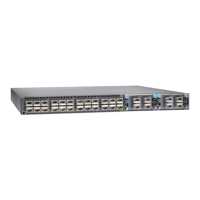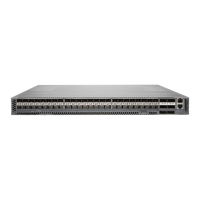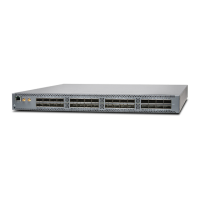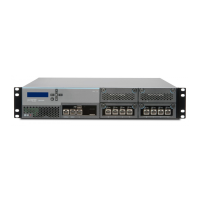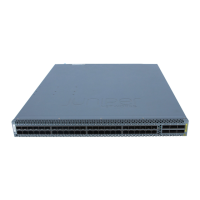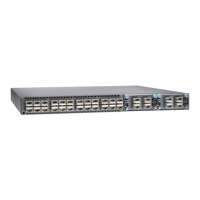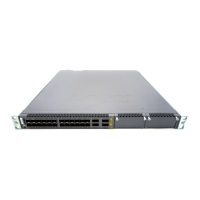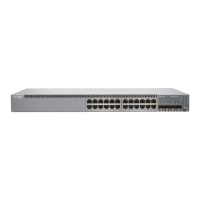5. Slide the transceiver in gently until it is fully seated. If you are installing a CFP
transceiver, tighten the captive screws on the transceiver by using your fingers.
6. Remove the rubber safety cap when you are ready to connect the cable to the
transceiver.
WARNING: Do not look directly into a fiber-optic transceiver or into the
ends of fiber-optic cables. Fiber-optic transceivers and fiber-optic cables
connected to transceivers emit laser light that can damage your eyes.
Figure 56: Installing a Transceiver
1— Ejector lever
Related
Documentation
Removing a Transceiver on page 135•
• Connecting a Fiber-Optic Cable on page 138
Removing a Transceiver
The transceivers for Juniper Networks devices are hot-removable and hot-insertable
field-replaceable units (FRUs): You can remove and replace them without powering off
the device or disrupting device functions.
NOTE: After you remove a transceiver or when you change the media-type
configuration, wait for 6 seconds for the interface to display the operational
commands.
Before you begin removing a transceiver from a device, ensure that you have taken the
necessary precautions for safe handling of lasers (see Laser and LED Safety Guidelines
and Warnings).
Ensure that you have the following parts and tools available:
•
An antistatic bag or an antistatic mat
•
Rubber safety caps to cover the transceiver and fiber-optic cable connector
135Copyright © 2017, Juniper Networks, Inc.
Chapter 14: Replacing Transceivers and Fiber-Optic Cables
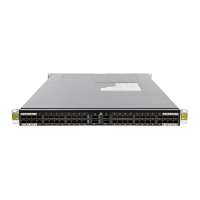
